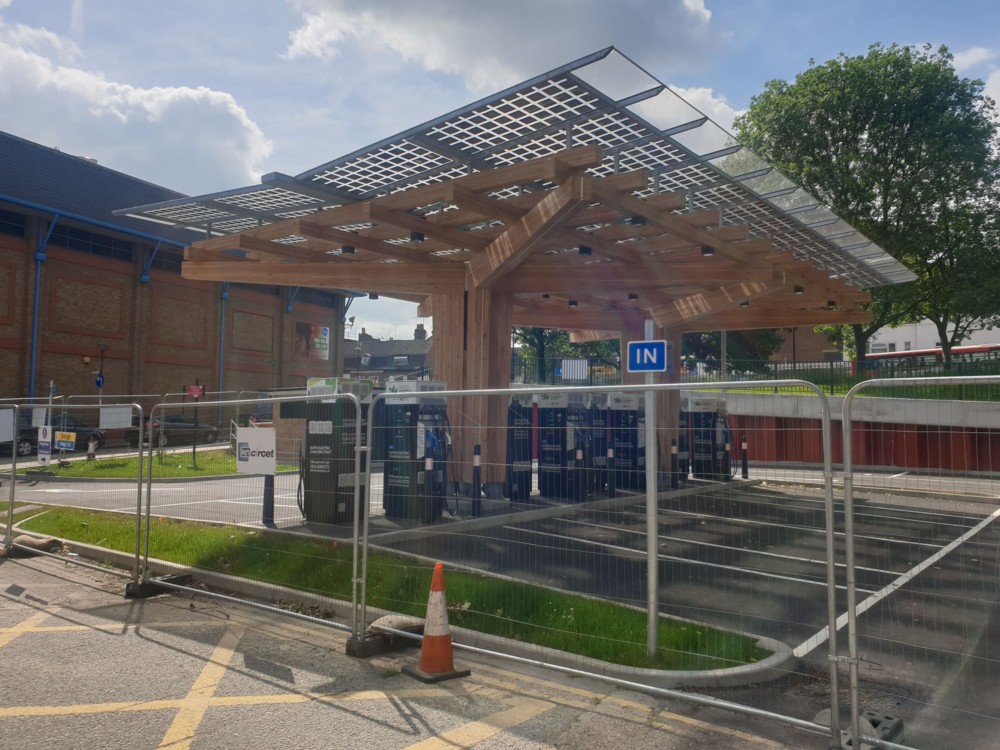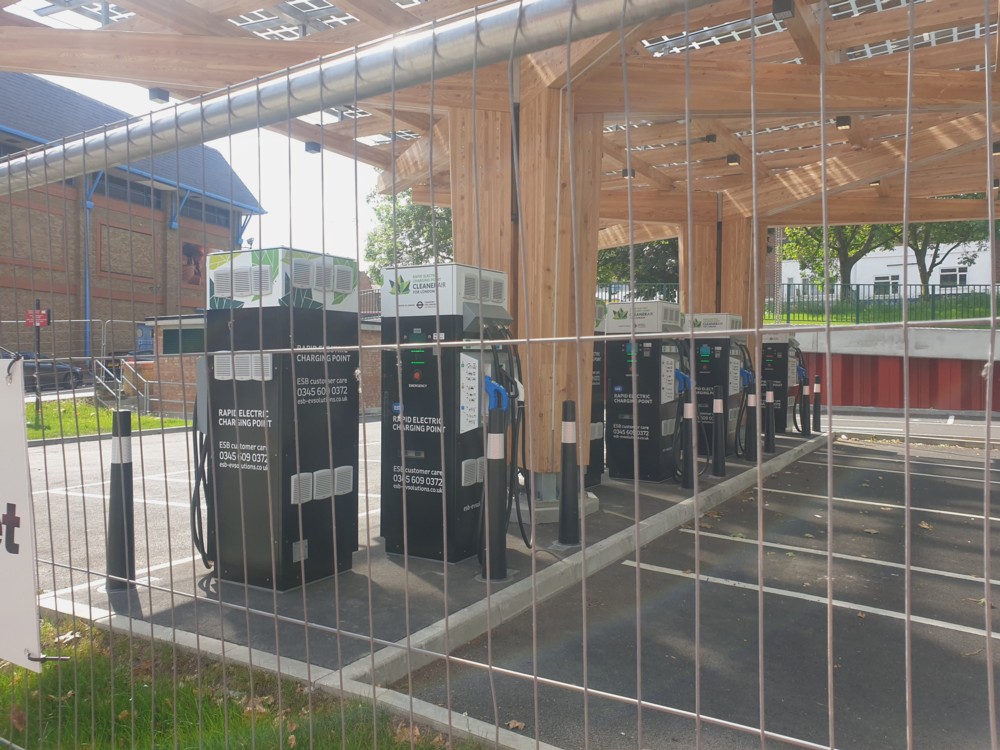Further to this posting about electric cars, incoming from Alastair, photoe by him a few days ago:
The temporary railings show that this is new.
Everything depends now on the cost. Can you get further, for less, with one “filling”? If so, then there follows the rapid switch, followed presumably by a price hike (to stop regular electricity bills going through the roof and (worse) regular electricity supplies being buggered up and to encourage popular demand for new power stations (surely including nuclear)), followed by the slow but sure demise of the petrol car.
I take the point made in the comments on the earlier posting about how this will cause demand for electricity to rise. Nevertheless, a step-by-step process is easily imaginable, unlike with electric scooters going more than trivially faster than regular scooters. Electric scooters of a speed worth bothering with will require infrastructural upheaval. The difference between building this charging station, and that power station, repeatedly, each in just the one place, and on the other hand re-building the entire road system, all gazillion miles of it, to the disadvantage of all larger vehicles (definitely including electric cars), at huge expense, is all the difference.



I think the point isn’t that we need more electricity generation to power EVs, it is the cabling that we already have may not have sufficient capacity to charge the nation’s cars especially if they will usually be charged during night time. This is going to require more overhead lines to get the electricity from the power stations to the substations, and then more underground cabling to get it to the individual houses. High speed charging will require even higher capacity cabling to the rapid charging station.
The BBC article I linked to in the comments of the previous post indicates that the National Grid don’t see that as a problem. It says the grid already has a lot of spare capacity as it is designed to cope with the peak demand spikes at say half time in a big sporting match. And even if new cabling is needed that won’t be any harder than putting in the high speed broadband cabling of the last few years.